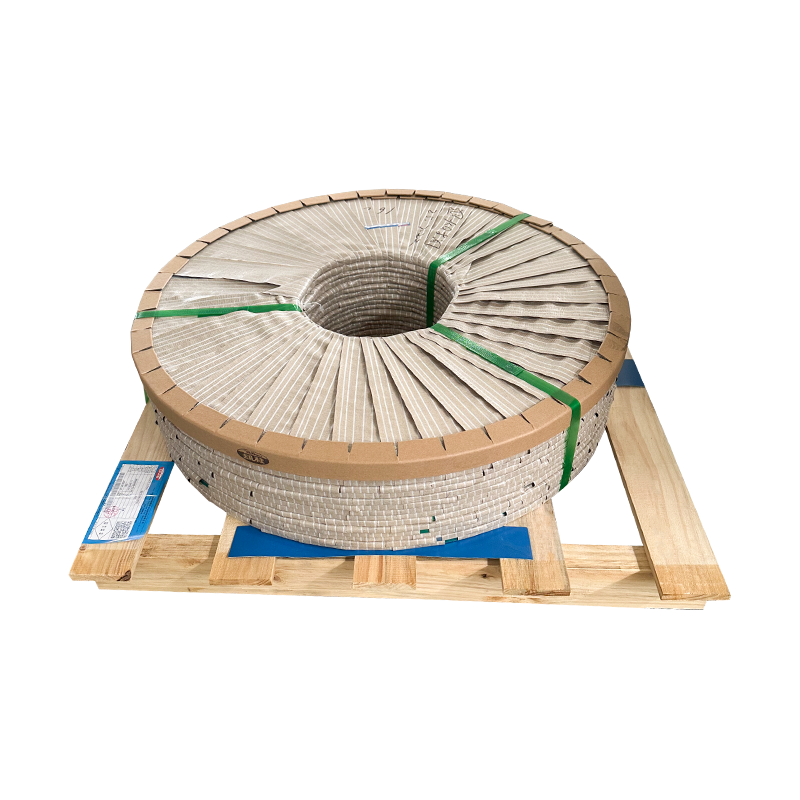304L stainless steel is a low-carbon variant of the widely used 304 stainless steel. Known for its excellent corrosion resistance, versatility, and mechanical properties, 304L stainless steel strips have become indispensable across numerous industries. Understanding where and why these strips are used can help engineers, manufacturers, and end-users make informed decisions about material selection. This article explores the industries that commonly use 304L stainless steel strips and explains the reasons behind their widespread application.
Chemical and Petrochemical Industry
One of the primary industries using 304L stainless steel strips is the chemical sector. The unique combination of corrosion resistance and strength makes these strips suitable for handling aggressive chemicals. 304L stainless steel can withstand exposure to acids, alkalis, and other corrosive substances without significant degradation.
In chemical plants, 304L strips are often used in the fabrication of storage tanks, pipelines, and heat exchangers. These applications require materials that can maintain structural integrity under both high temperatures and corrosive environments. The low carbon content of 304L minimizes the risk of sensitization during welding, which is crucial for ensuring durability and safety in chemical processing equipment.
Food and Beverage Industry
Hygiene is a critical concern in food and beverage production. 304L stainless steel strips are widely used because they are non-reactive and easy to clean. The corrosion resistance of these strips ensures that they do not contaminate food products, even when exposed to acidic or alkaline ingredients.
In this industry, 304L strips are commonly used to manufacture conveyor belts, storage bins, processing equipment, and packaging machinery. Their ability to withstand frequent cleaning with hot water and detergents without losing structural integrity makes them ideal for food processing environments. Additionally, the smooth surface finish achievable with 304L strips reduces the risk of bacterial growth, supporting compliance with strict hygiene standards.
Pharmaceutical and Medical Industry
The pharmaceutical and medical sectors also benefit from the properties of 304L stainless steel strips. In these industries, equipment must maintain high levels of cleanliness and resist corrosion from a variety of chemicals, including solvents and disinfectants.
304L strips are used in the construction of laboratory benches, sterile storage containers, and processing equipment for pharmaceutical production. Their non-reactive nature ensures that medications and other medical products are not contaminated. Furthermore, the low carbon content of 304L reduces the risk of corrosion at welded joints, which is vital for maintaining sterility and ensuring long service life in medical equipment.
Automotive and Transportation Industry
304L stainless steel strips have found applications in the automotive and transportation sectors due to their combination of corrosion resistance and mechanical strength. They are particularly valuable in environments where vehicles are exposed to harsh conditions, including road salt, moisture, and varying temperatures.
Automakers use 304L strips in exhaust systems, fuel tanks, and structural components that require both durability and resistance to environmental factors. The ability to form and weld 304L strips without compromising corrosion resistance makes them suitable for intricate automotive components that demand precision and reliability.

Construction and Architectural Applications
In the construction industry, 304L stainless steel strips are often used for both functional and aesthetic purposes. Their corrosion resistance ensures long-term durability, while the ability to achieve polished finishes allows them to enhance the visual appeal of buildings.
304L strips are used in curtain walls, decorative panels, handrails, and facades. They are particularly useful in coastal areas where exposure to saltwater can accelerate corrosion. By incorporating 304L strips into architectural elements, builders can achieve structures that are both visually striking and capable of withstanding environmental challenges.
Energy and Power Generation
Energy production facilities, including power plants and renewable energy installations, often rely on 304L stainless steel strips. These strips are used in heat exchangers, boilers, and piping systems that require high corrosion resistance and mechanical stability under elevated temperatures.
The low carbon content of 304L stainless steel minimizes the risk of intergranular corrosion, which can occur in welded components exposed to high heat. This makes 304L strips a preferred choice for critical applications in power generation where safety and longevity are paramount.
Marine and Offshore Applications
The marine industry presents one of the harshest environments for metals due to constant exposure to saltwater. 304L stainless steel strips offer sufficient corrosion resistance for many marine applications, especially in areas not directly exposed to highly concentrated chloride environments.
These strips are used in boat fittings, deck components, and offshore platforms where durability and resistance to rust are required. While 316L stainless steel is often chosen for areas with extreme chloride exposure, 304L remains a cost-effective option for many marine components that still demand reliability and corrosion resistance.
Electronics and Electrical Industry
In electronics and electrical manufacturing, 304L stainless steel strips are valued for their stability, strength, and corrosion resistance. They are used in housings, brackets, and shielding components for electronic devices.
The precision with which 304L strips can be fabricated allows manufacturers to create components that maintain dimensional accuracy while resisting oxidation and corrosion over time. This property is particularly important in electronic devices that operate in humid or chemically active environments.
Household Appliances
Many household appliances incorporate 304L stainless steel strips due to their durability and ease of cleaning. Applications include refrigerator components, kitchen sinks, ovens, and cookware.
304L strips maintain their appearance and structural integrity despite repeated exposure to heat, moisture, and cleaning agents. Their corrosion resistance ensures a longer service life, while the smooth surface finish enhances both functionality and aesthetics in home environments.
Summary of Industrial Benefits
Across these industries, several key characteristics make 304L stainless steel strips indispensable:
- Corrosion resistance: Protects equipment and components from rust and chemical damage.
- Low carbon content: Reduces the risk of sensitization during welding, enhancing durability.
- Formability and weldability: Allows for fabrication into complex shapes without compromising properties.
- Hygienic surface: Suitable for food, pharmaceutical, and medical applications.
- Mechanical strength: Supports structural and functional applications across industries.
By understanding these properties, industries can select 304L stainless steel strips for applications where both reliability and longevity are essential.


 English
English русский
русский





